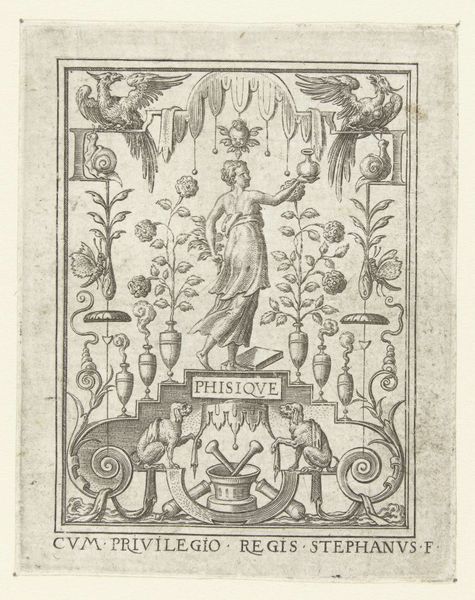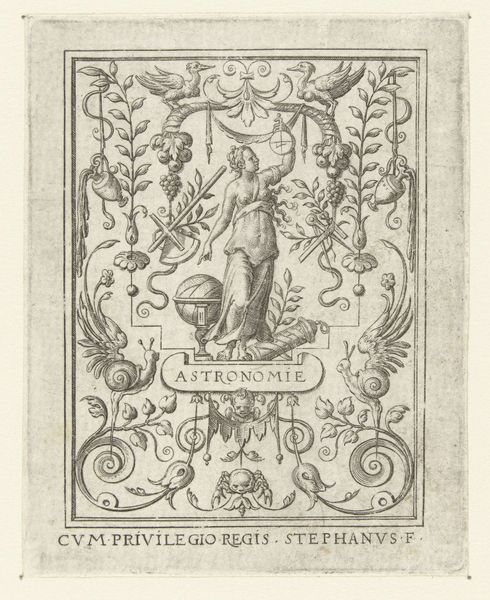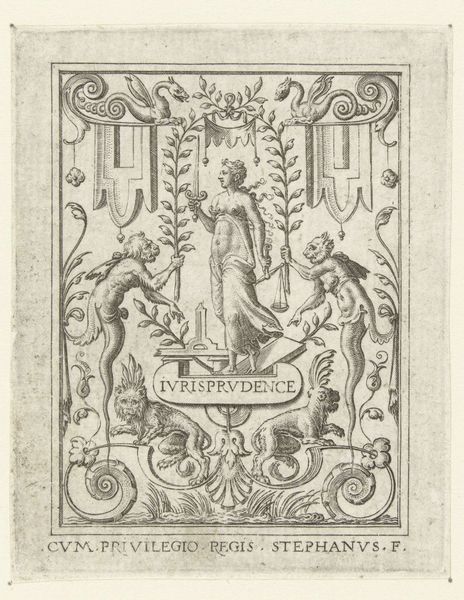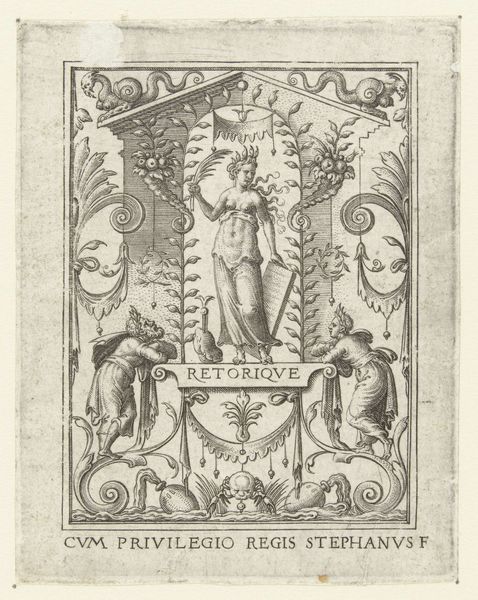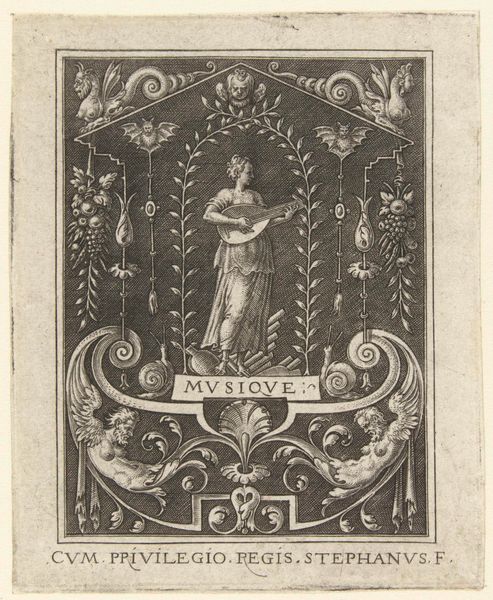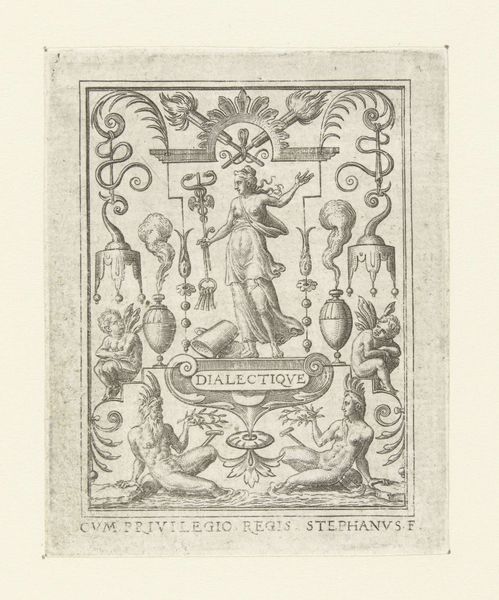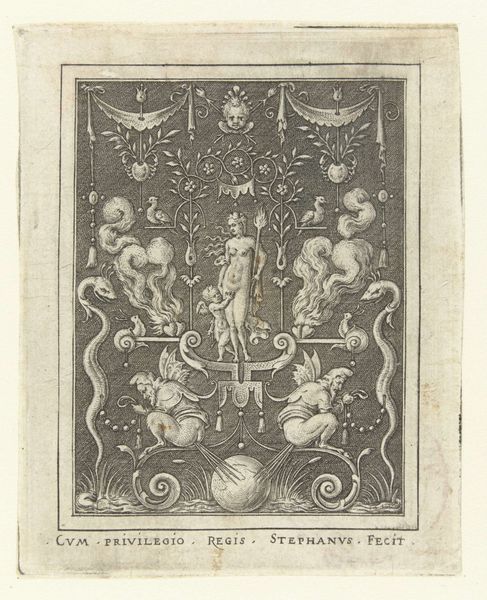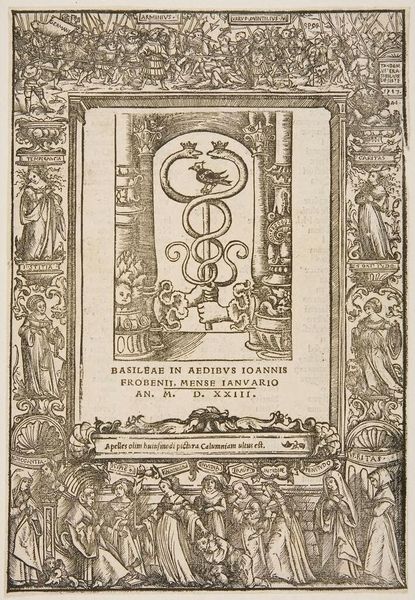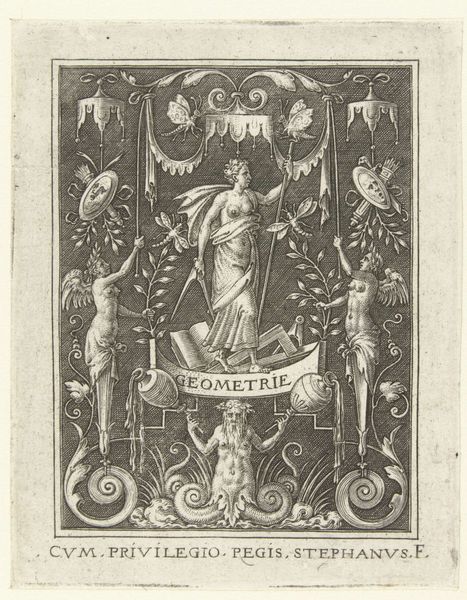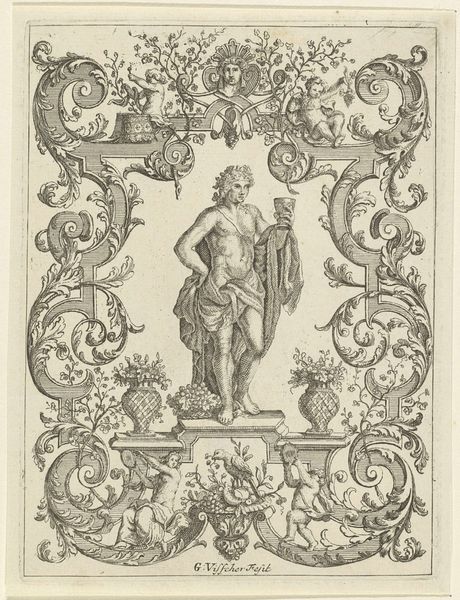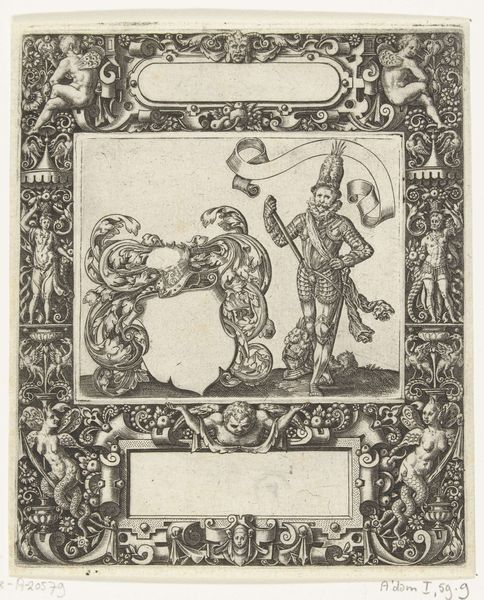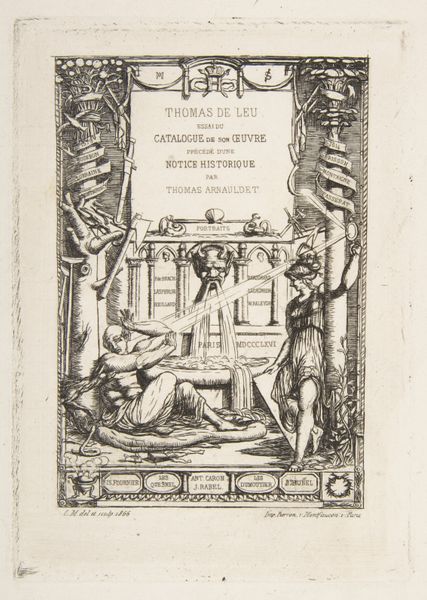
drawing, print, intaglio, ink, engraving
#
drawing
#
allegory
#
pen drawing
# print
#
pen illustration
#
intaglio
#
old engraving style
#
mannerism
#
figuration
#
ink line art
#
11_renaissance
#
ink
#
line
#
history-painting
#
engraving
Dimensions: height 81 mm, width 64 mm
Copyright: Rijks Museum: Open Domain
Curator: This intricately designed engraving, simply titled "Theologie," was created sometime between 1528 and 1583 by Etienne Delaune. Editor: It's immediately striking how this black and white ink drawing achieves such an incredible sense of dynamism. It seems to burst with energy, even restrained as it is by the frame. Curator: It is a superb example of mannerist art from the Renaissance period. Consider the context; printed images like this played a pivotal role in circulating ideas about religion, state power, and, most crucially, self-identity across Europe at that time. Editor: Absolutely, it is not just art; it’s a document, embedded with symbolic language and visual rhetoric! The figure of Theology stands tall, flanked by allegorical elements within a highly organized decorative framework. How might the figure's prominence influence public perception? And whose theology is being represented here? Curator: That's right, note how knowledge is depicted at the bottom with two older gentlemen looking over scrolls, visually reinforcing the authority of scholarly, theological discourse, perhaps upholding traditional doctrine. Delaune’s choice of engraving made these representations accessible to a broad audience. Editor: And accessible meant open to interpretation, dissent, perhaps even subversion! The woman herself is complicated. She wields both sword and flame—aggressive knowledge, wouldn't you say? Her very image broadcasts power, gender roles and, by implication, social control in that historical moment. We also have to acknowledge the exclusivity: who had access to the tools that allow understanding in religious contexts at this period? Curator: Precisely. Thinking about the influence this artwork could have on sixteenth-century viewers allows us to reflect on our own contemporary lens of access to information. Delaune’s engraving serves not just as a visual representation of theology, but also as a historical marker of religious and cultural shifts. Editor: It challenges us to understand how visual imagery shaped identities and political stances. Reflecting on who holds power, which stories are privileged, allows critical assessment of not only this artwork, but society in the here and now.
Comments
No comments
Be the first to comment and join the conversation on the ultimate creative platform.
